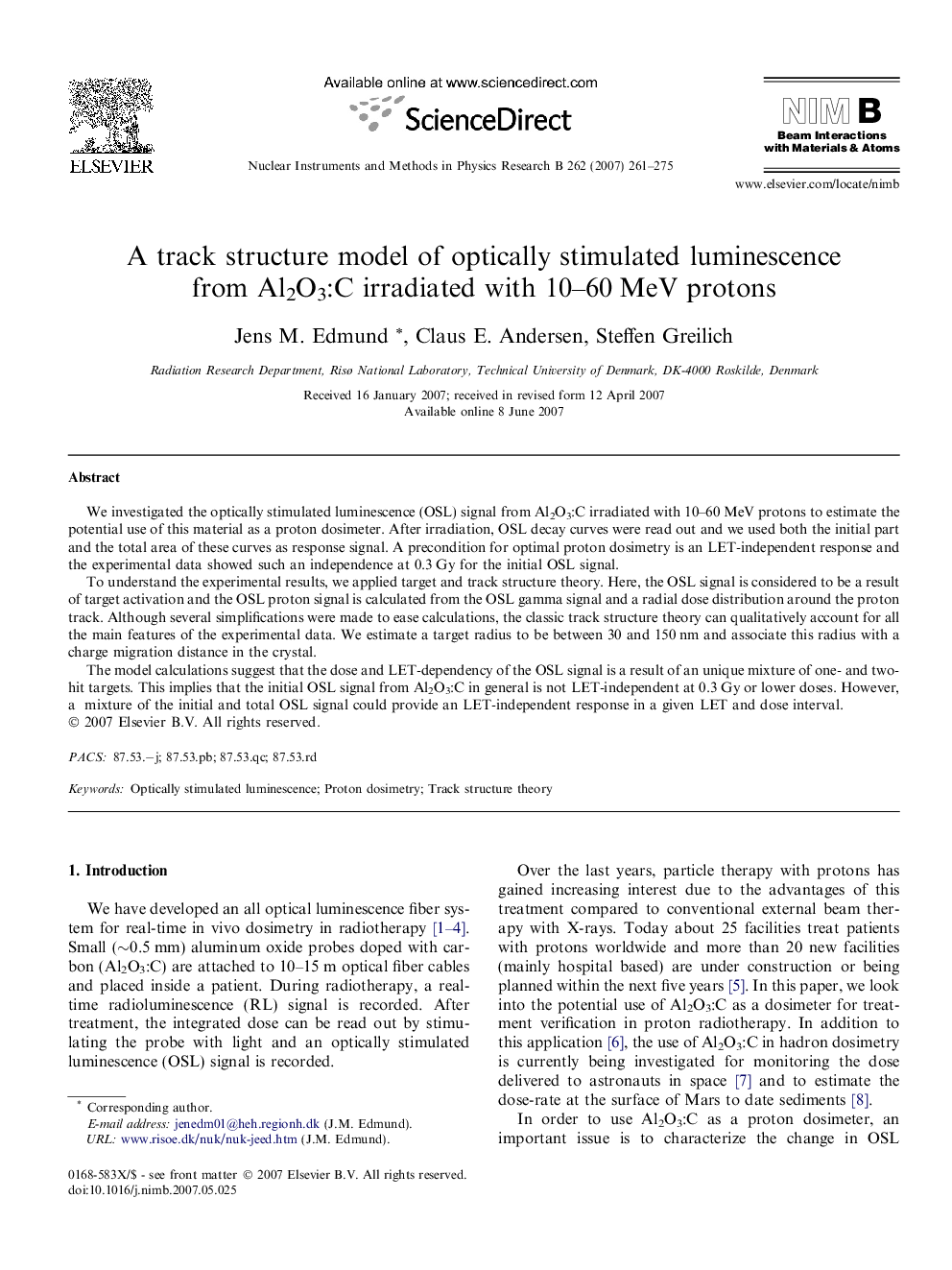| Article ID | Journal | Published Year | Pages | File Type |
|---|---|---|---|---|
| 1687688 | Nuclear Instruments and Methods in Physics Research Section B: Beam Interactions with Materials and Atoms | 2007 | 15 Pages |
We investigated the optically stimulated luminescence (OSL) signal from Al2O3:C irradiated with 10–60 MeV protons to estimate the potential use of this material as a proton dosimeter. After irradiation, OSL decay curves were read out and we used both the initial part and the total area of these curves as response signal. A precondition for optimal proton dosimetry is an LET-independent response and the experimental data showed such an independence at 0.3 Gy for the initial OSL signal.To understand the experimental results, we applied target and track structure theory. Here, the OSL signal is considered to be a result of target activation and the OSL proton signal is calculated from the OSL gamma signal and a radial dose distribution around the proton track. Although several simplifications were made to ease calculations, the classic track structure theory can qualitatively account for all the main features of the experimental data. We estimate a target radius to be between 30 and 150 nm and associate this radius with a charge migration distance in the crystal.The model calculations suggest that the dose and LET-dependency of the OSL signal is a result of an unique mixture of one- and two-hit targets. This implies that the initial OSL signal from Al2O3:C in general is not LET-independent at 0.3 Gy or lower doses. However, a mixture of the initial and total OSL signal could provide an LET-independent response in a given LET and dose interval.
